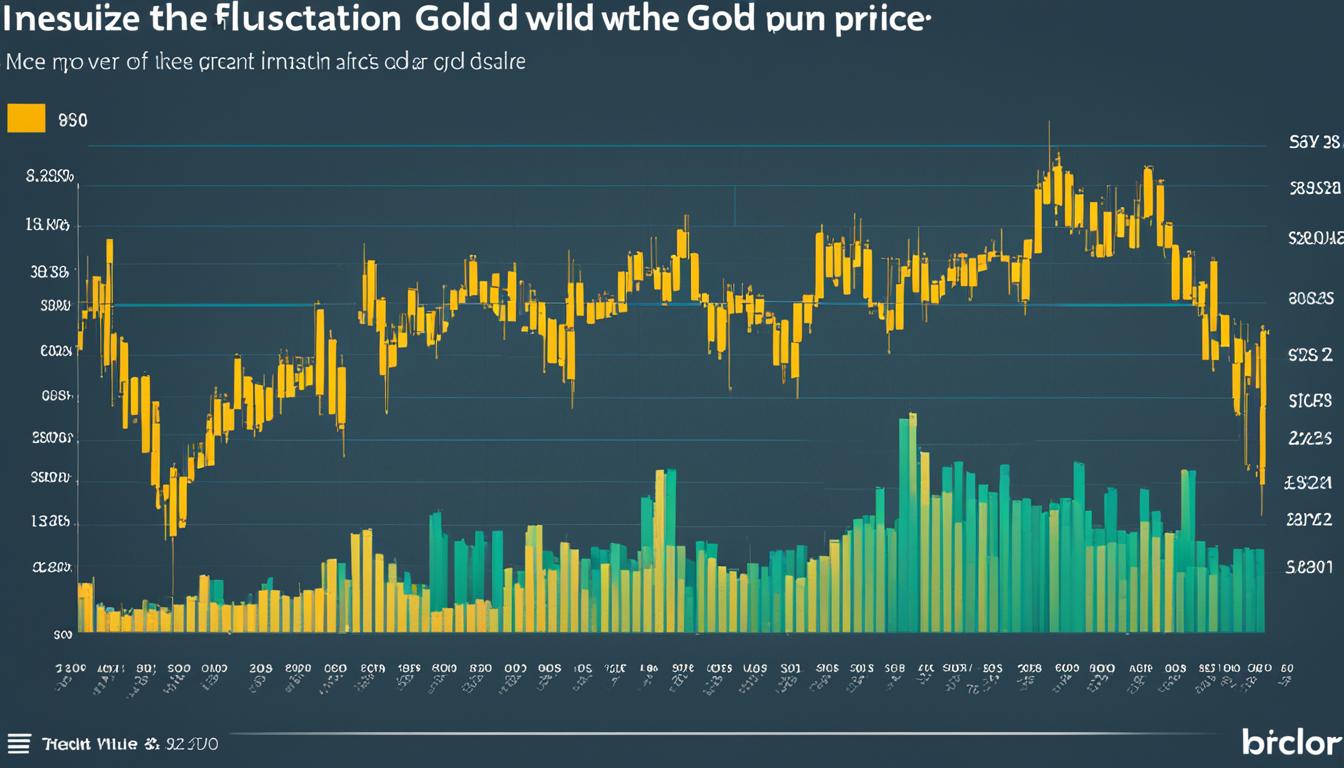Gold, a precious metal highly regarded for its rarity and unique properties, continues to hold its value in today’s market. As investors seek secure investments to weather financial uncertainties, gold remains a popular choice due to its resilience to air, moisture, heat, and solvents. It serves as a safe haven and a means of coverage in times of crisis.
Gold has been used for centuries and plays a vital role in various industries, including electrical and jewellery. Its high value and resistance to inflation make it an attractive option for individuals looking to protect their wealth. The demand for gold continues to grow, with South Africa leading as the largest producer.
The current gold price of over $2,400 per ounce reflects the metal’s strong performance in recent years. To stay informed about the live gold market updates and the reasons why investing in gold today can be advantageous, click here.
Investors have multiple options for investing in gold, including physical purchases, gold securities, and gold certificates. Each method has its advantages and considerations, such as costs and accessibility. It’s important to weigh the pros and cons before making any investment decisions.
Tracking the live gold price is essential for investors looking to buy or sell gold. Prices fluctuate based on supply and demand, central bank policies, inflation, and the overall performance of financial markets. Staying updated on these factors can help investors make informed decisions.
As you navigate the gold market, understanding the historical context and factors that influence gold prices can provide valuable insights. Studying gold price charts and historical data allows investors to analyze past performance, identify trends, and make informed decisions.
Investing in gold has its pros and cons. While gold is revered for its ability to hedge against economic uncertainties and provide portfolio diversification, its price can be volatile. Additionally, the accessibility of gold investments can vary, and trading fees may apply.
In conclusion, gold remains a valuable and appealing asset in today’s financial market. Its historical significance, industrial uses, and secure investment nature make it a prominent choice for investors. By keeping up with live market updates and understanding the factors shaping gold prices, investors can navigate the gold market with confidence.
Gold Market History and Importance
Gold has a rich history that dates back centuries. Evidence of gold extraction in Egypt can be traced as early as 2000 B.C. The allure of gold, with its rarity, durability, and beauty, has fascinated people throughout the ages. In 50 B.C., the Romans minted the first gold coins, marking an important milestone in the market’s history.
Gold’s value extends beyond its aesthetic appeal. It possesses unique industrial properties that make it indispensable in various industries. Gold is easily workable and is an excellent conductor of electricity and heat. These characteristics have led to its crucial role in sectors such as electrical and dental technology.
The jewelry industry also plays a significant role in the demand for gold, accounting for approximately 75% of its usage. The precious metal’s timeless appeal and status as a symbol of wealth and prestige make it a popular choice for crafting exquisite jewelry pieces.
When it comes to gold production, South Africa takes the lead as the largest producer of gold, followed by the United States, Germany, the International Monetary Fund, and France. These countries contribute to maintaining the global supply of gold, fueling its continued importance in various markets.
To delve deeper into the history and significance of gold in investments, you can refer to this informative article.
Understanding the history and importance of gold provides valuable context for investors and enthusiasts in today’s market. As we explore further, we will dive into global gold reserves and production, investment opportunities, live gold price updates, factors influencing gold prices, and more.
Global Gold Reserves and Production
When it comes to global gold reserves, the United States takes the lead with an impressive 8,133 metric tons. Following closely behind are Germany with 3,417 metric tons, the International Monetary Fund with 3,217 metric tons, and France with 2,586 metric tons. These countries boast significant stockpiles of gold, highlighting its importance as a valuable asset.
Gold is mined on all continents, contributing to the constant increase in its global quantity. However, mining activities are prohibited in Antarctica due to environmental conservation efforts. Despite this restriction, gold production thrives in many other parts of the world.
Among the leading gold producers, South Africa takes the top spot, accounting for 16% of the market share. This African nation has a long-standing history of gold mining and continues to contribute significantly to the global gold supply.
The continuous growth of gold reserves and production can be attributed to several factors. Firstly, gold’s indestructibility makes it accumulate over time. Unlike other commodities, gold is not consumed, ensuring that its reserves remain intact. Additionally, as a safe-haven investment, gold attracts investors globally, further driving its production.
For more information on gold reserves and production, you can visit the United States Geological Survey’s website, where you’ll find comprehensive data and statistics related to gold.
Investing in Gold
Gold is a highly regarded investment option and is often considered a secure haven in times of economic uncertainty. Investing in gold provides individuals with the opportunity to diversify their portfolios and protect themselves against market volatility. There are several ways to invest in gold, each with its own advantages and disadvantages.
One popular method of investing in gold is through physical purchases. This can involve buying gold bars, coins, or jewellery from reputable banks or precious metal dealers. Physical gold ownership offers the advantage of having a tangible asset that can be stored securely. However, it also comes with additional costs, such as insurance, storage fees, and the risk of theft or loss.
Another option is to invest in gold securities or certificates. These financial instruments allow investors to gain exposure to the price of gold without owning the physical metal. Gold exchange-traded funds (ETFs) and gold mutual funds are examples of such securities. Investing in gold securities provides liquidity, ease of trading, and a lower initial investment requirement compared to physical gold. However, investors should be aware of management fees and the potential for market volatility.
For those interested in active trading, gold can also be bought and sold on the stock exchange. This allows investors to take advantage of short-term price fluctuations and trade gold futures or options contracts. Trading gold on the stock exchange offers flexibility and the potential for higher returns. However, it requires a deeper understanding of market dynamics and carries the risk of financial loss.
When considering an investment in gold, it is important to evaluate factors such as costs, trading fees, liquidity, and accessibility. Additionally, investors should assess their risk tolerance and investment goals before deciding on the most suitable method of investing in gold.
Investing in gold can provide a secure and potentially profitable investment option. It offers the benefit of diversifying a portfolio and acting as a hedge against inflation. Whether through physical purchase, gold securities, or trading on the stock exchange, gold investment allows individuals to participate in the global gold market.
In-depth analysis of gold investment opportunities
For a more detailed analysis of investing in gold and the different methods available, refer to the Wikipedia article on gold as an investment. The article provides comprehensive information on the historical performance of gold, its role in diversifying portfolios, and the factors that influence its price.
Live Gold Price Updates
Stay informed about the current gold price with live updates available through various sources such as online platforms, bullion dealers, and financial news websites. Tracking the live gold price allows you to make informed decisions based on the latest market data.
The price of gold is quoted in different currencies, including US Dollars, British Pounds, Euros, Japanese Yen, Australian Dollars, Canadian Dollars, and Swiss Francs. This provides flexibility for investors and traders worldwide.
Gold prices fluctuate in response to various factors, including supply and demand dynamics, central bank policies, inflation rates, and the performance of other financial markets. Keeping an eye on live gold price updates helps you navigate these fluctuations and understand the market sentiment.

For more insights into the gold market, check out CBS News’ article on gold price updates and reasons to consider investing in this precious metal today.
Factors Affecting Gold Price
The price of gold is influenced by various factors that impact its supply and demand dynamics, central bank policies, inflation rates, and the performance of stock markets and bonds. These factors collectively contribute to the fluctuations in gold prices, making it essential for investors to understand their influence.
One of the primary factors that affect the price of gold is supply and demand. When the demand for gold outweighs its supply, the price tends to rise. This often occurs during times of economic uncertainty or geopolitical tensions when investors seek the safety and stability of gold as a store of value. The limited supply of gold, coupled with its enduring appeal, drives up its price in such situations.
Another significant factor that impacts the gold market is central bank policies. Central banks hold a substantial amount of gold reserves and their buying or selling activities can influence the overall supply and demand dynamics. For example, when central banks increase their gold reserves, it signals confidence in gold as a reliable asset, increasing the demand and subsequently driving up the price.
Inflation rates also play a crucial role in the price of gold. During periods of high inflation, the value of fiat currencies decreases, making gold more attractive as an inflation hedge. As investors seek to preserve their purchasing power, the demand for gold increases, leading to an upward pressure on its price.
The performance of stock markets and bonds can also affect the price of gold. When stock markets experience volatility or downturns, investors often turn to gold as a safe haven investment, driving up its demand and price. Similarly, when bond yields are low, gold becomes relatively more appealing as it doesn’t yield interest or dividend but maintains its value over time.
Understanding the various factors that influence the price of gold is crucial for investors looking to make informed decisions. By keeping a close eye on supply and demand dynamics, central bank policies, inflation rates, and the performance of other financial markets, investors can navigate the gold market effectively and capitalize on potential opportunities.
For more information on the factors affecting gold prices, you can visit the Royal Mint website.
Gold Price Chart and Historical Data
When it comes to monitoring and analyzing the price of gold, gold price charts play a crucial role. These charts provide investors and traders with both a visual representation of the current price of gold and access to historical gold price data. By examining this historical data, investors can analyze past performance and track long-term trends over time.
Gold price charts typically display the price of gold in various currencies and can cover a span of over 20 years, allowing users to observe the fluctuations and patterns in the market. With live gold price data being updated every few seconds, investors can stay up-to-date with the latest market changes and make informed decisions based on real-time information.
Gold price charts are available on online platforms and can be customized to display different timeframes, ranging from minutes to days. This flexibility allows investors to zoom in on specific periods or take a broader view of the gold market. The ability to customize these charts according to individual preferences and needs enhances the usability and effectiveness of these tools.

Accessing a gold price chart is an invaluable resource for investors and traders, providing them with a comprehensive overview of gold price movements and trends. By studying the chart, investors can identify potential buying or selling opportunities and make better-informed decisions.
Whether you are a seasoned investor or a beginner looking to enter the gold market, utilizing gold price charts and historical data is essential for understanding the dynamics of the market and making informed investment choices. Incorporating these powerful tools into your investment strategy can help you navigate the volatility of the gold market and maximize your potential returns.
Investing in Gold: Pros and Cons
Investing in gold can be an attractive option for investors looking to diversify their portfolios and safeguard their wealth. However, like any investment, it is crucial to carefully consider the pros and cons before making a decision.
The Pros of Investing in Gold
- Safe-Haven Asset: Gold is often seen as a safe-haven asset, meaning it can retain its value or even increase in times of economic uncertainty or geopolitical tensions.
- Diversification: Adding gold to an investment portfolio can provide diversification, reducing overall risk. Gold has historically had a low correlation with other asset classes, such as stocks and bonds, making it an effective hedge against market volatility.
- Hedge Against Inflation: Gold has maintained its purchasing power over time and has served as a reliable hedge against inflation. When the value of fiat currencies declines, gold has often appreciated, preserving wealth.
- Global Demand: The global demand for gold, particularly in the jewellery industry, ensures a constant market for precious metal. This global demand contributes to its long-term value stability.
The Cons of Investing in Gold
- Price Volatility: Gold prices can experience significant short-term fluctuations, making it a potentially volatile investment. Investors need to be prepared for price swings and have a long-term investment horizon.
- Additional Costs and Risks: Investing in physical gold, such as gold bars or coins, may involve additional costs for storage, insurance, and transportation. Furthermore, physical gold carries the risk of theft or damage.
- Accessibility: The accessibility of gold investments varies depending on the chosen method. While physical gold can be purchased from banks or dealers, investing in gold securities or trading it on the stock exchange requires brokerage accounts and financial knowledge.
- Trading Fees: When trading gold on the stock exchange, investors may incur trading fees, brokerage fees, and other transaction costs, which can impact overall investment returns.
Investing in gold can be a prudent decision for investors seeking stability, diversification, and long-term wealth preservation. However, it is essential to carefully assess the pros and cons, considering personal investment goals and risk tolerance. Conducting thorough research and consulting with financial professionals can help investors make informed decisions when investing in gold.
For more information on investing in gold, you can visit Investopedia.
Conclusion
Gold, with its rich history and global importance, stands as a unique and valuable asset that has captivated individuals for centuries. Its ability to serve as a secure investment and a potential hedge against economic uncertainties has made it a sought-after commodity in the financial market. The demand for gold, particularly in the jewellery industry, plays a significant role in driving its market value.
Investing in gold offers diversification and the potential for capital appreciation. However, it is important to recognize that gold investments come with risks and costs. By monitoring live gold prices and understanding the factors that influence them, investors can make informed decisions to navigate this dynamic market.
Whether considering gold as a long-term investment or for short-term trading, it remains a prominent asset that continues to play a key role in the global economy. For further historical context on gold prices, refer to historical gold price data. By staying informed and embracing the unique characteristics of gold, investors can position themselves to take advantage of the opportunities that this precious metal presents.




